This Anime Does Not Exist was launched on January 19th 2021, showcasing almost a million images (n=900,000 at launch, now n=1,800,000 images), every single one of which was generated by Aydao‘s Stylegan2 model. For an in-depth write-up on the progression of the field of anime art generation as well as techniques, datasets, past attempts, and the machine learning details of the model used, please read Gwern’s post. This post is a more concise and visual post discussing the website itself, thisanimedoesnotexist.ai, including more images, videos, and statistics.
The Creativity Slider and Creativity Montage
Previous versions of ‘This X Does Not Exist’ (including anime faces, furry faces, and much more) featured a similar layout: an ‘infinite’ sliding grid of randomly-selected samples using the javascript library TXDNE.js, written by Obormot. Something more unique about Aydao’s model was that samples remained relatively stable, sometimes significantly increasing in beauty and detail as the ‘creativity’ value (see: psi) was increased all the way from 0.3 to 2.0. This led to the creation of the ‘creativity slider’ as well as linking every image to a page with a tiled layout showing every version of the image:


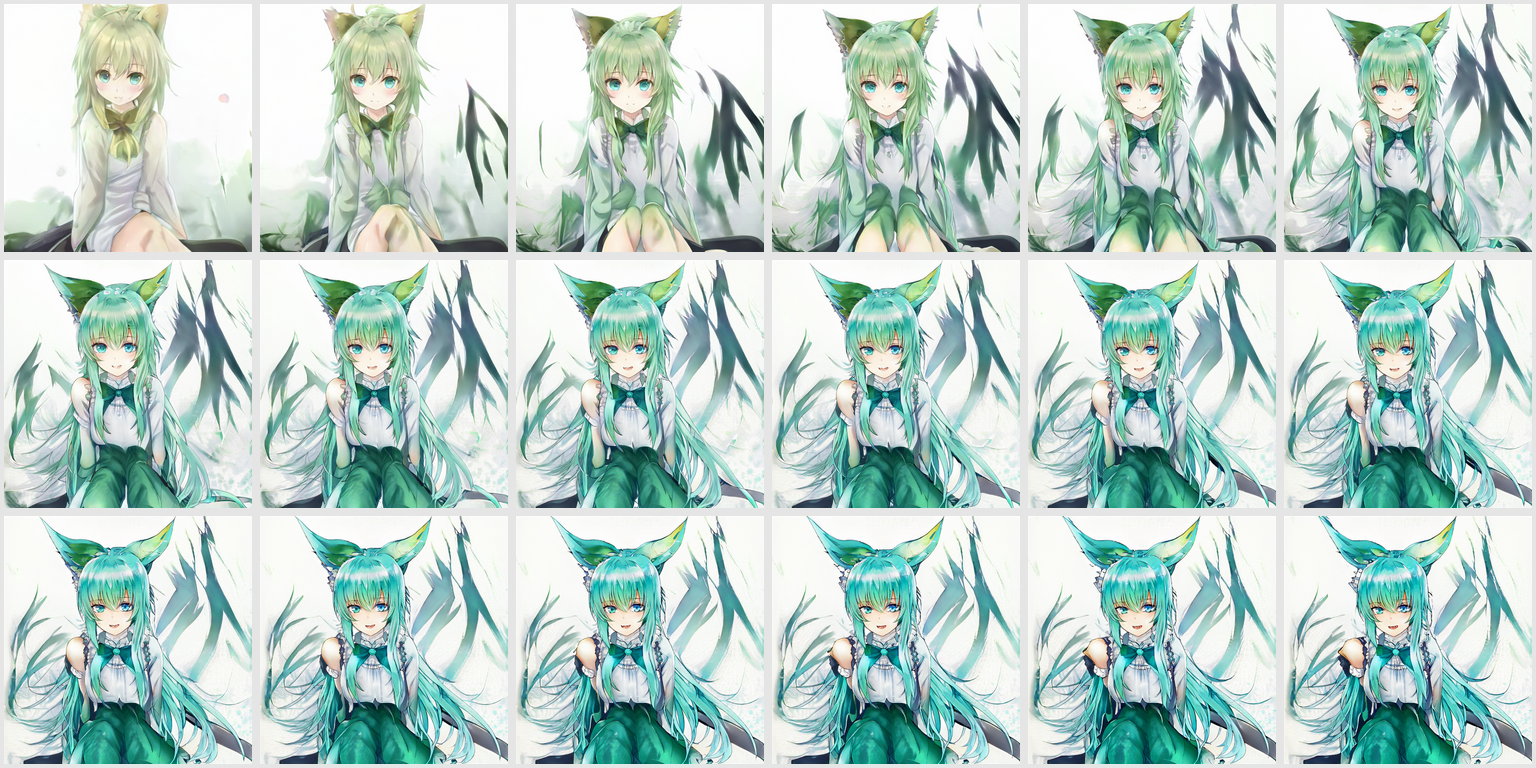
Although the above two are among my favorite examples of creativity montages, many users found some other interesting things that increased creativity could do:
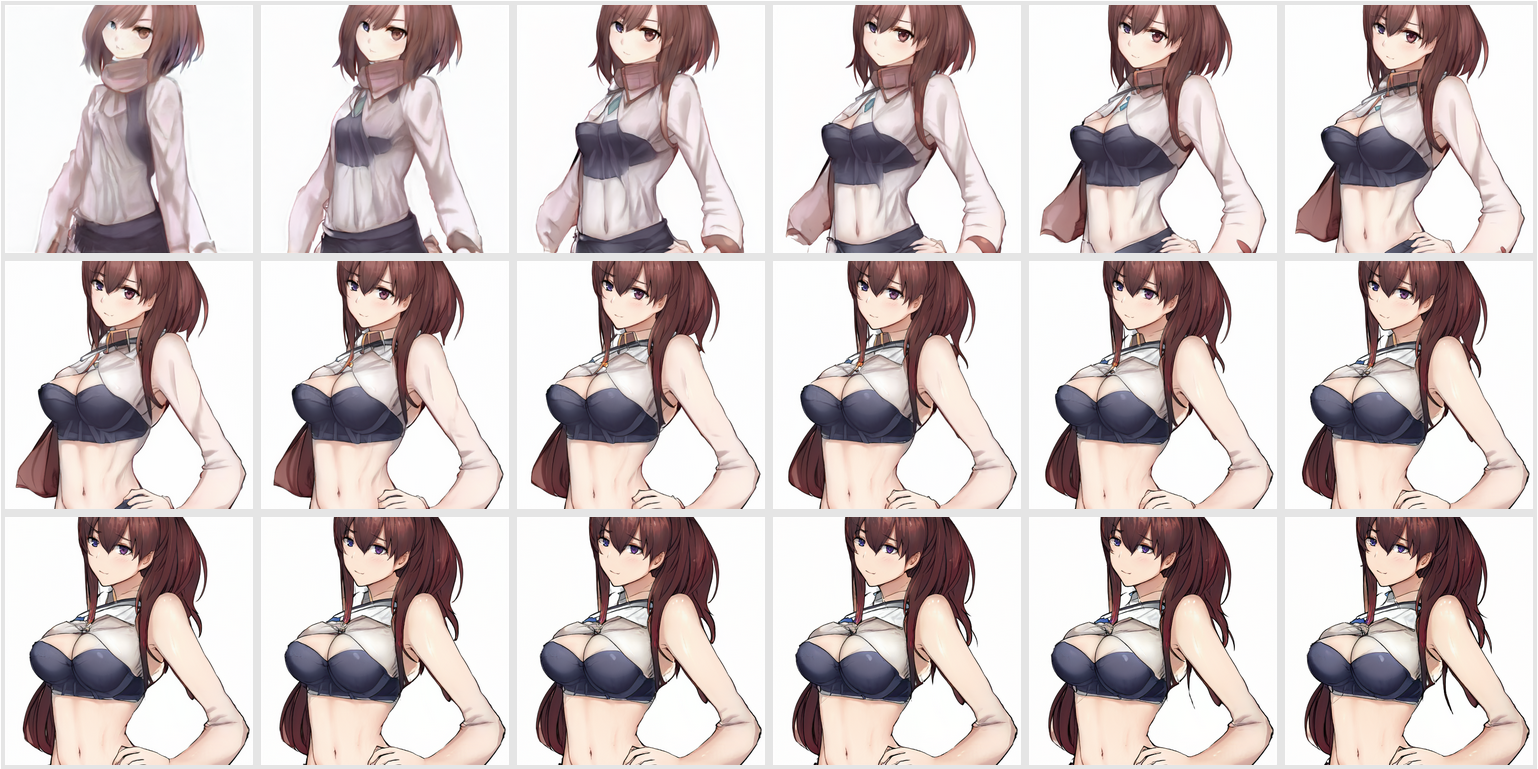


Selected artwork
The best way to demonstrate the stunning potential of this model is to show some of the samples that users have enjoyed the most:



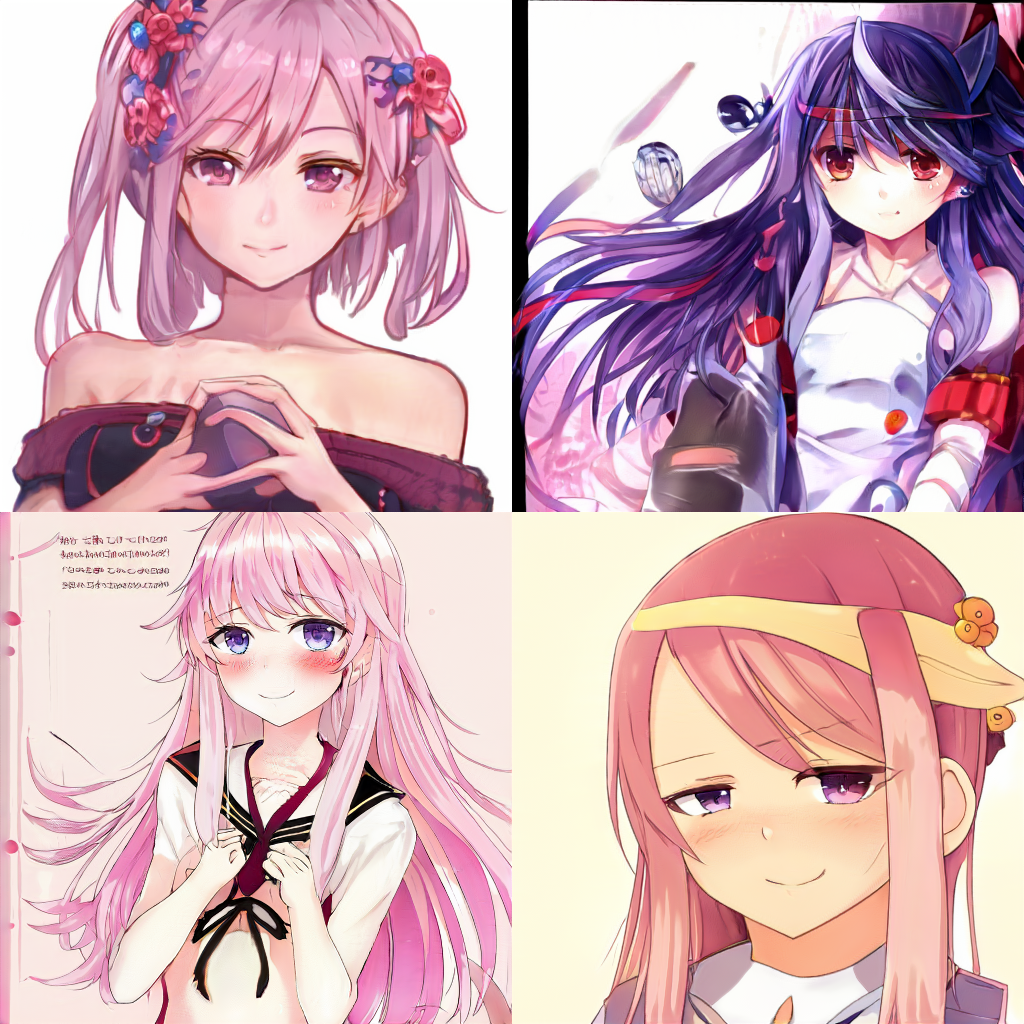
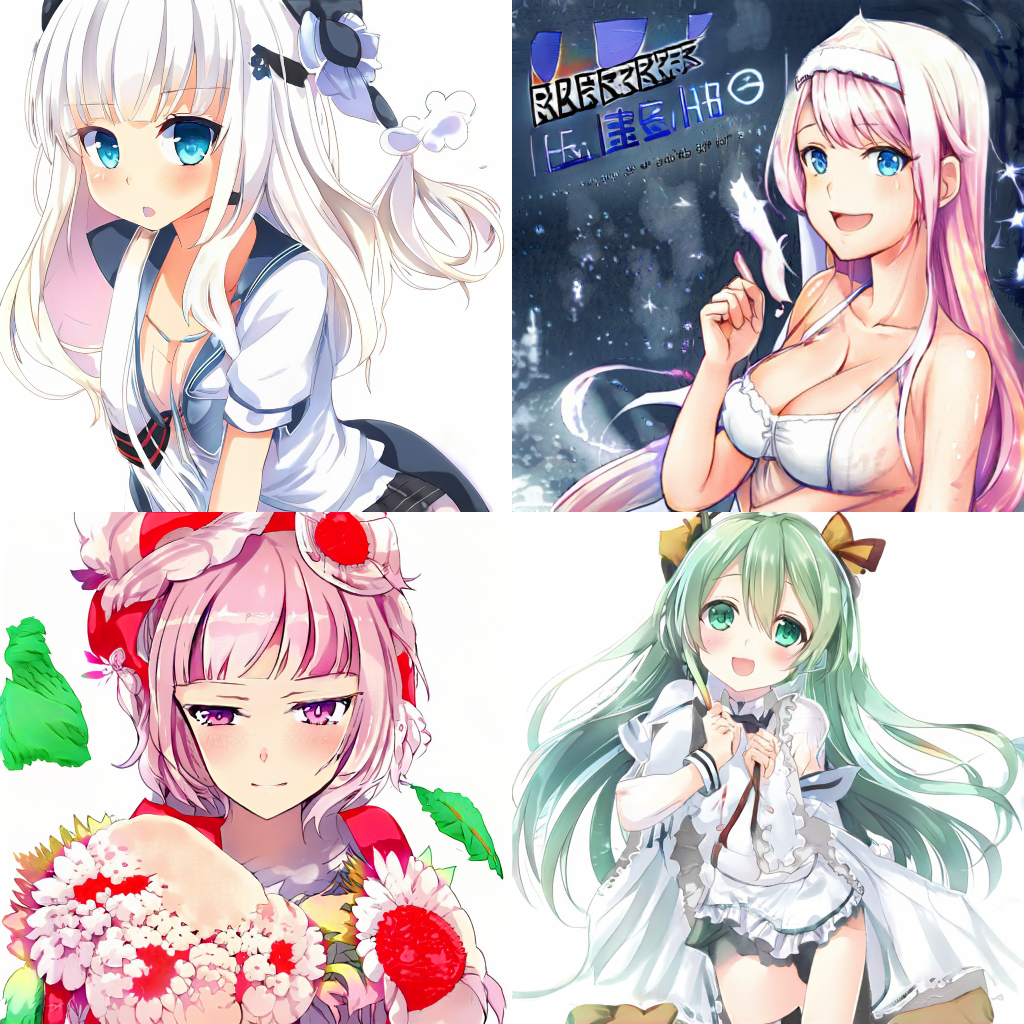
Weirdest images
Incidentally, it also seems that users love sharing images that are not the most beautiful, but the weirdest as well. The below four were among the most popular images on the website during the first few hours, when there was only n=10,000 of each image:

Collapsed images
Sometimes the result collapses enough to lead to an image that, although pretty, does not at all resemble the ideal target:

Writing
In many cases the model will produce writing which looks distinctly Japanese, however upon closer introspection, is not legible, with each character closely resembling distinct counterparts in Japnese scripts, however diverging just enough to produce confusion with a lingering feeling of otherworldlyness.

Videos and gifs
As it’s possible to produce any number of images from the model, we can also use these images to produce videos and animated gifs. The primary style of this is referred to as an interpolation video which is produced by iterating through the latent variables frame by frame, transitioning in between different samples seamlessly:
Additionally, I decided to make a few videos that used a constant image seed, but modified only the creativity value instead (instructions on how I did this are here):

Statistics and users
After the first day, the website had served over 100 million requests, using over 40TB of bandwidth:
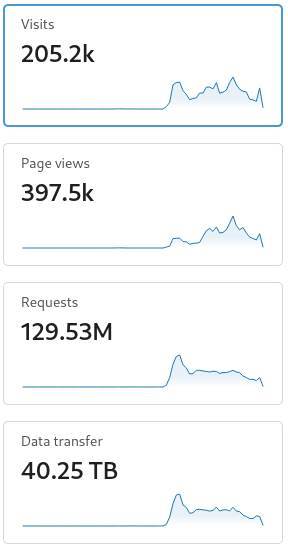
At launch, the largest contributor to traffic by country was the United States, followed by Russia, but over the next two days this quickly shifted to Japan.
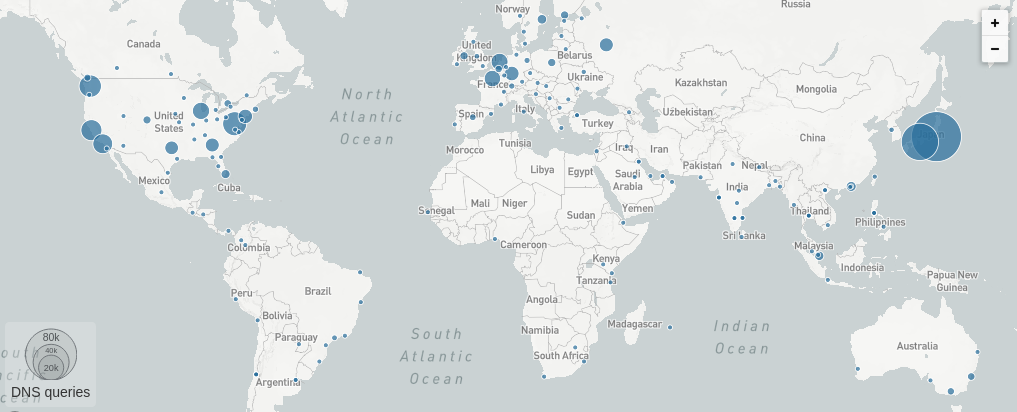
As of writing this post (Jan 21st, 2021), the largest sources of traffic appear to be from Twitter, Hacker News, Gigazine, Hatena, and Himasoku.
Costs
Compare to similarly-trafficed websites, thisanimedoesnotexist.ai was relatively cheap, thanks to not requiring server-side code (serving only static content):
- Domain ‘thisanimedoesnotexist.ai’: for two years from NameCheap: $110
- Cloudflare premium, although not required, improves image load time significantly via caching with their global CDN: $20
- Image generation: 1,800,000 images, 10,000 generated per hour with a batch size of 16 using a g4dn.xlarge instance, which has a single V100 GPU with 16GB of VRAM at $0.526 per hour on-demand: $95
- “Accidentally” hosting the website from AWS for the first day, resulting in over 10TB of non-cached bandwidth charges: >$1,000 (via credits)
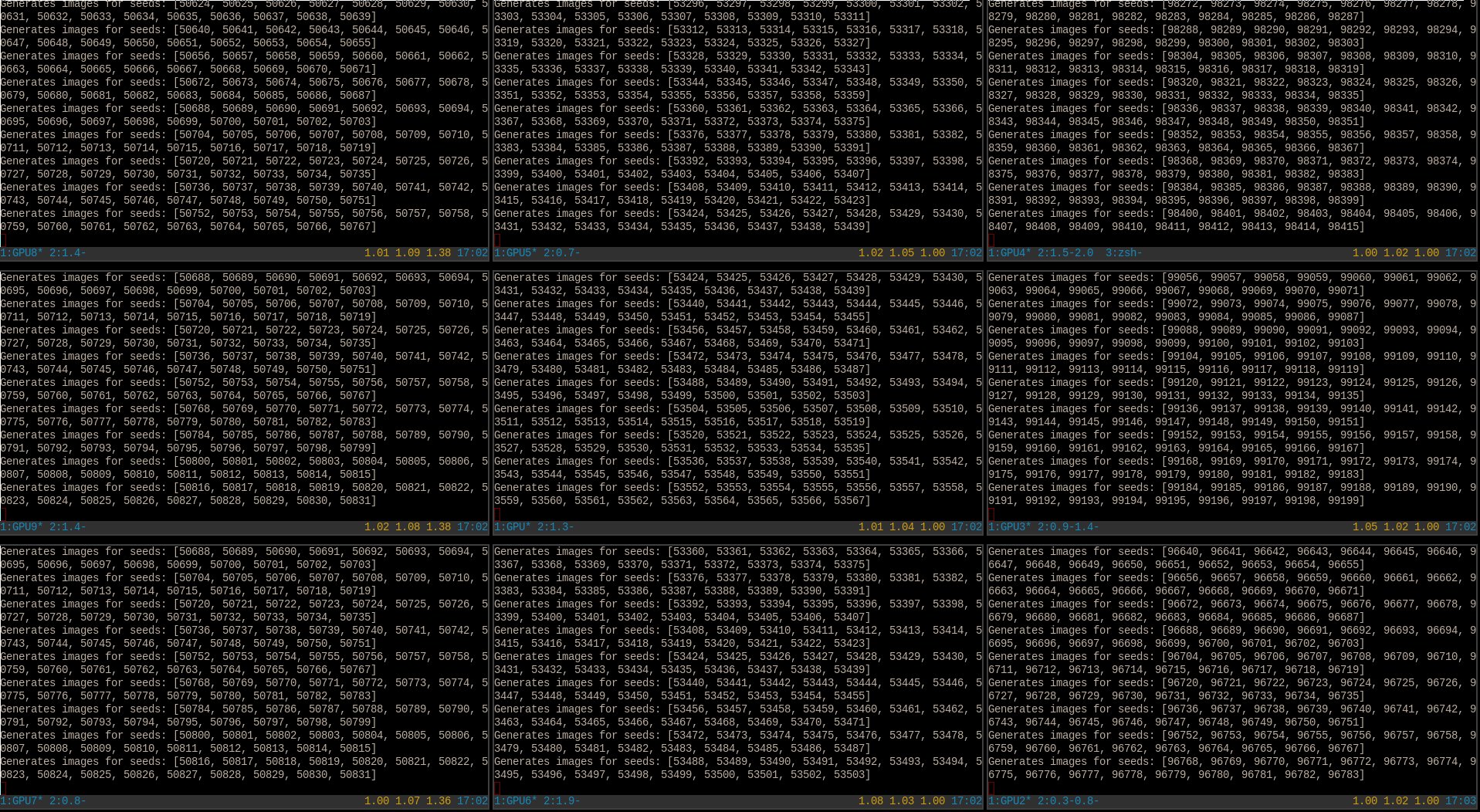

Conclusions and the future
All in all, this was a fun project to put together and host, and I’m glad that hundreds of thousands of people have visited it, discussed it, and enjoyed this novel style of artwork.
If you want to read in-depth about the ML behind this model and everything related to it, please read Gwern’s post.
Thank you to Aydao for relentlessly improving Stylegan2 and training on danbooru2019 until these results were achieved as well as releasing the model for anyone to use, Obormot for the base javascript library used, TXDNE.js, Gwern for producing high-quality writeups, releasing the danbooru datasets, and and other members of Tensorfork including Gwern, arfa, shawwn, Skyli0n, Cory li, and more.
The field of AI artwork, content generation, and anything related is moving very quickly and I expect these results to be surpassed before the year is over, possibly even within a few months.
If you have a technical background and are looking for an area to specialize in, I cannot emphasize the extent that I’d strongly suggest machine learning/artificial intelligence: it will have the largest impact, it will affect the most fields, it will help the most people, it will pay the most, and it will cause you to be surrounded by the best and smartest people you could hope for.
Thanks for reading and I hope you enjoyed the website! For more about myself, feel free to read my about page or see my Twitter.
Bonus: additional image compilations from Gwern



